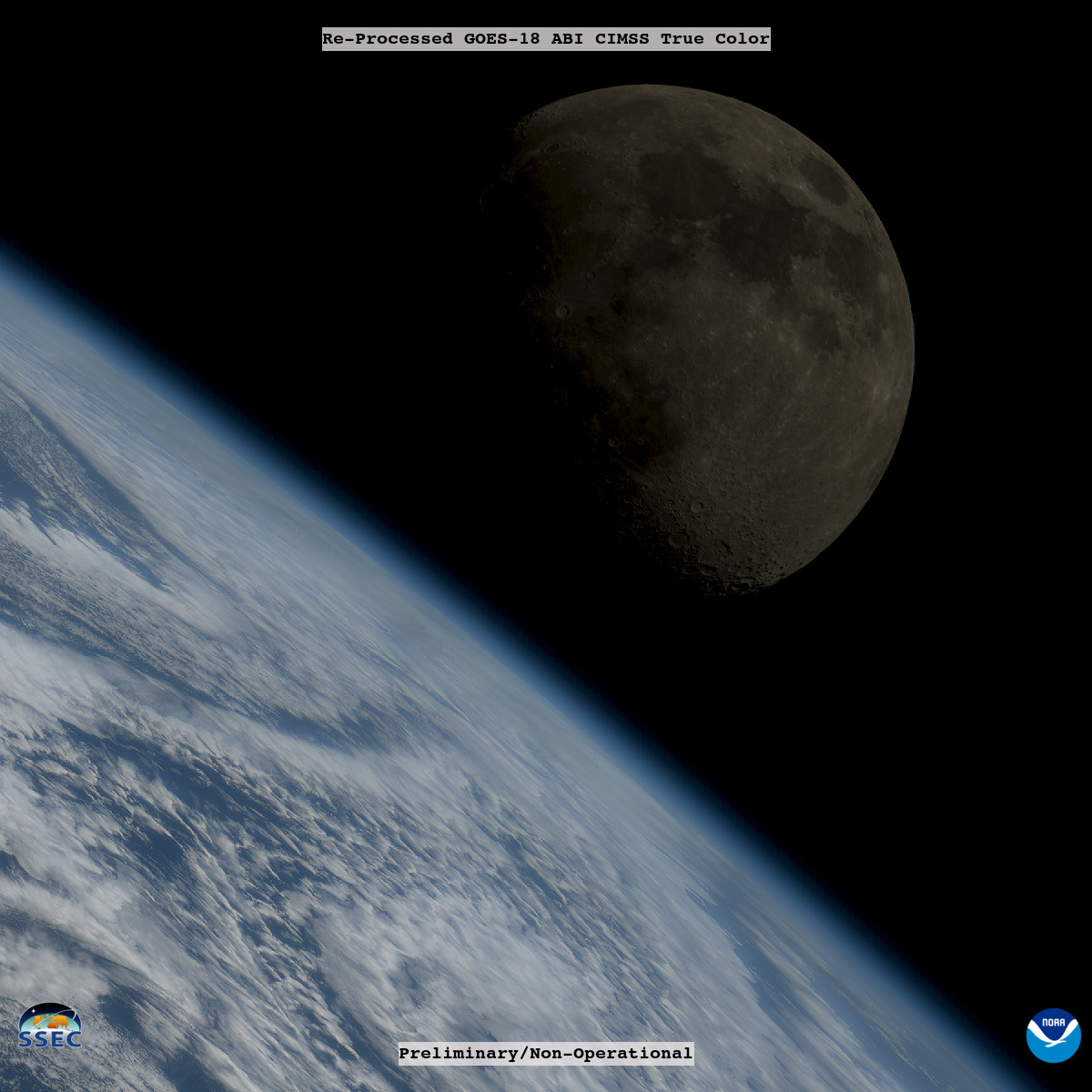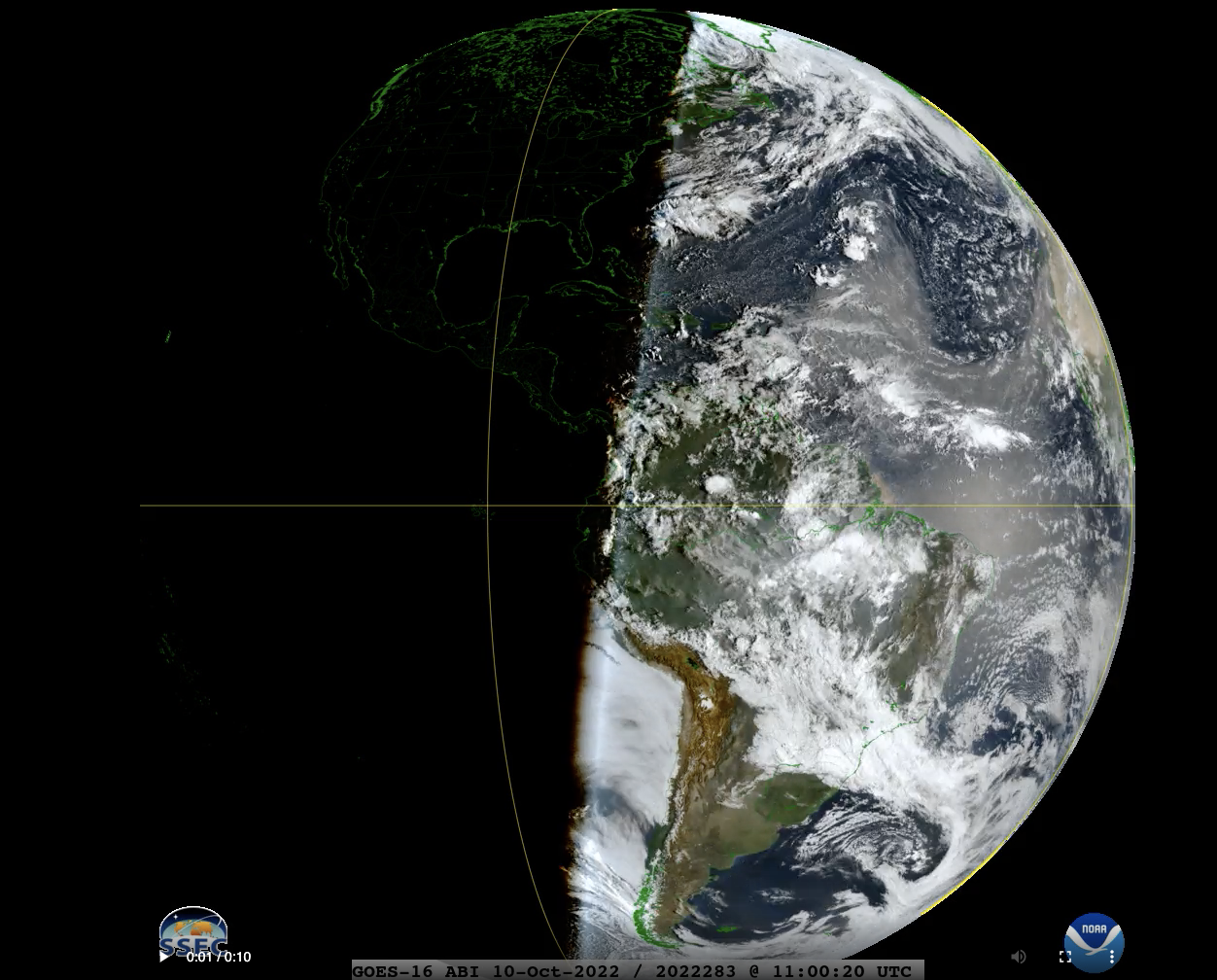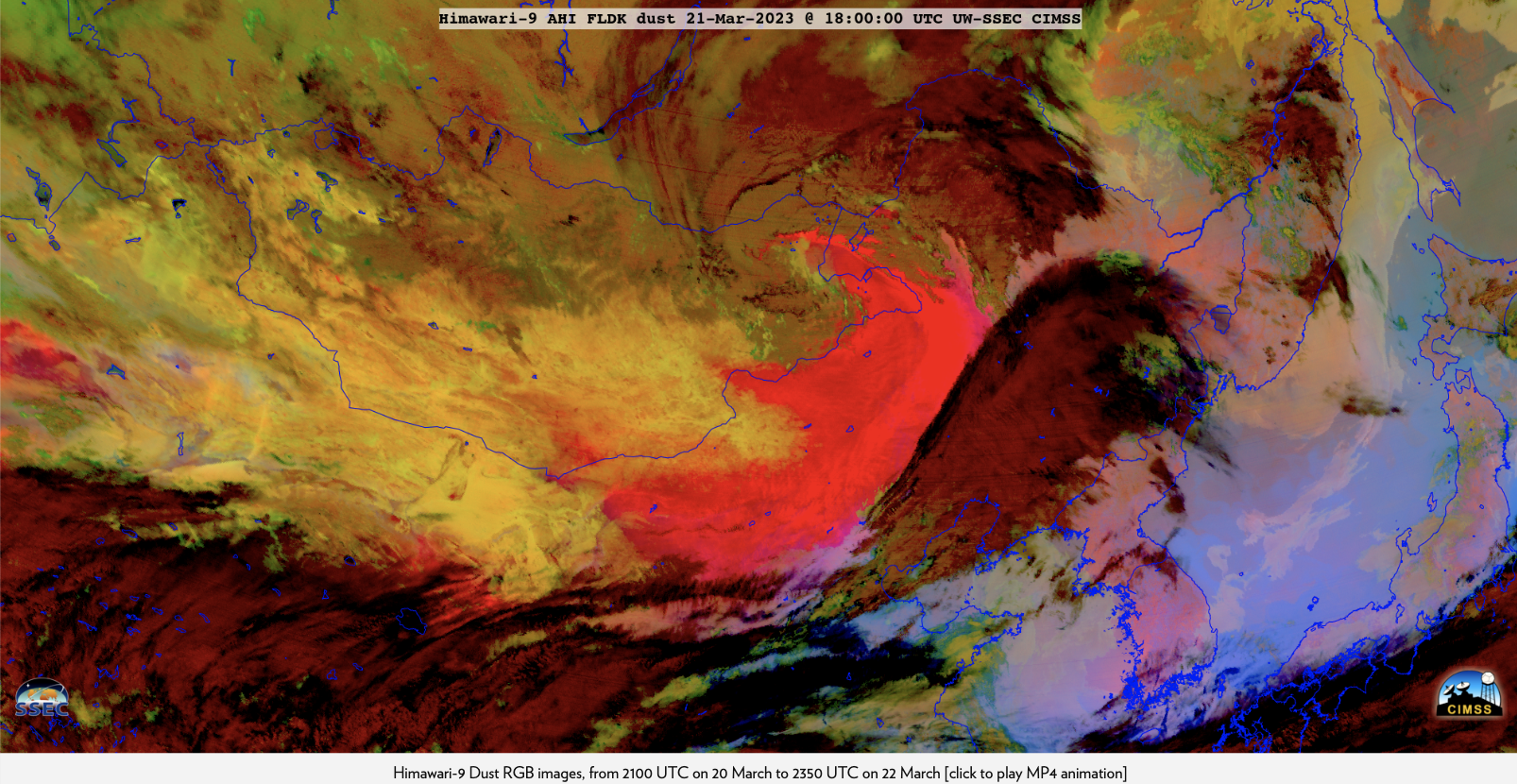
[ Archive ]

 |
CIMSS-NOAA Weekly Report [ Archive ] |
 |
CIMSS AND ASPB WEEKLY HIGHLIGHTS FOR THE WEEK ENDING MARCH 24, 2023
DATA, INFORMATION, AND USE-INSPIRED SCIENCE:
SSEC Checks Out GOES-15 Imager: The Space Science & Engineering Center (SSEC)'s Satellite Data Services (SDS) team at the University of Wisconsin-Madison has been ingesting GOES-15 GOES-Variable (GVAR) data since March 7, 2023 while NOAA operates the Imager. SSEC is currently ingesting data from five geostationary satellites (GOES-16, GOES-18, GOES-15, Meteosat, and EWS-G1) from around the world via antenna and eight satellites terrestrially (from Korea, Japan, Europe and China). Without funding for GOES-15 support, SSEC is ingesting and saving the GOES-15 Imager GVAR files and GOES-15 imagery looks to be of reasonable quality. (Jerry Robaidek, SSEC, robo@ssec.wisc.edu, M. Gunshor, CIMSS, matg@ssec.wisc.edu, T. Schmit, E/RA2, 608-263-0291, tim.j.schmit@noaa.gov)
(Click image to enlarge)
Figure: The five spectral bands (1 visible, 4 Infrared) of the GOES-15 Imager on March 23, 2023 at 20:45 UTC, from the full disk image, zoomed in over the west coast of the United States.
FUTURE OUTLOOK:
AWARDS AND RECOGNITION:
TRAVEL AND MEETINGS:
Presentation at the GOES-R Summit Splinter Meeting: T. Schmit gave a (virtual) talk on "Better Seeing our Atmosphere" at a splinter meeting during the Geostationary Operational Environmental Satellite (GOES)-R Summit that was held in Colorado March 22 and 23, 2023. The presentation focused on unique imagery that could be received with special reprocessing (e.g., not to clip the GOES data near the Earth edge). There are operational, research and outreach/educational reasons to provide these data. (T. Schmit, E/RA2, 608-263-0291)
 (Click image to enlarge)
(Click image to enlarge)
Figure: Specially processed (by D. Pogorzala) GOES-18 ABI (data were then preliminary, non-operational). Note the Moon and the atmosphere around the Earth which are not there in the operational files.
TRAINING AND EDUCATION:
CIMSS Presentation in Australian VLab Centre of Excellence Regional Focus Group: Scott Lindstrom from the Cooperative Institute for Meteorological Satellite Studies (CIMSS) gave a presentation on Synthetic Aperture Radar (SAR) wind case studies in the Pacific Ocean Basin for the March version of the Australian VLab Center of Excellence Regional Focus Group Meeting. After explaining the basics of SAR wind observations, Lindstrom discussed a variety of SAR Case Studies that have been placed on the CIMSS Satellite Blog (https://cimss.ssec.wisc.edu/satellite-blog/archives/category/sar). The (remote) meeting included attendees from Australia, Hong Kong, Indonesia, Myanmar, Samoa, Solomon Islands, South Korea and the United States. A recording of the presentation is available here: http://www.virtuallab.bom.gov.au/archive/regional-focus-group-recordings/. (S. Lindstrom, CIMSS, 608 263 4425)
FDTD Satellite Applications Webinar: Scott Lindstrom (Cooperative Institute for Meteorological Satellite Studies, CIMSS) and Dan Bikos (Cooperative Institute for Research in the Atmosphere, CIRA) coordinated with B. Motta (NOAA/NWS/OCLO/FDTD) to deliver a Forecast Decision Training Division (FDTD) Satellite Applications webinar on 22 March 2023. The webinar was led by Doug Kahn (NWS CLE Cleveland, OH) and was titled “ An Unusual Mid-Winter HSLC Event Across Northern Ohio on January 19, 2023”. The webinar was attended by 5 NWS offices (three WFOs, a CWSU, and Eastern Region). All FDTD Satellite Applications webinars are recorded and made available for viewing at: https://rammb.cira.colostate.edu/training/visit/satellite_chat/ and also made available on the NOAA CLC. (D. Bikos, CIRA, Dan.Bikos@colostate.edu; S. Lindstrom, CIMSS, scott.lindstrom@ssec.wisc.edu)
MEDIA INTERACTIONS AND REQUESTS:
SOCIAL MEDIA AND BLOG Posts:
SSEC and CIMSS Scientists in the News: Scientists at the University of Wisconsin-Madison (UW) Space Science and Engineering Center (SSEC) and the Cooperative Institute for Meteorological Satellite Studies (CIMSS) provide expert interviews, imagery and case studies to promote science. This week: CIMSS Satellite Blog contributors Scott Bachmeier, Scott Lindstrom, Alexa Ross and Tim Schmit published these case studies: "Blowing dust across Mongolia and China" (March 22), "JPSS ATMS/VIIRS imagery at the CIMSS Direct Broadcast ftp site is extended even further: San Juan, Puerto Rico data are added" (March 22), "Heavy Rain over Tutuila, American Samoa" (March 21), "Severe Winds, Snow, and Rain in California" (March 21), "Equinox: Fall 2022 to Spring 2023 as seen by GOES" (March 20), "Cyclone Yaku off the coast of Peru" (March 19), "Polar Hyperspectral Soundings in a Numerical Model and the Hazardous Weather Testbed" (March 17) and "Add Level 2 Products underneath the Night Microphysics RGB to know more about the atmosphere" (March 17). Read more at the CIMSS Satellite Blog: https://cimss.ssec.wisc.edu/satellite-blog/. (S. Bachmeier, CIMSS, S. Lindstrom, CIMSS, A. Ross, SSEC, T. Schmit, E/RA2, 608-263-0291, J. Phillips, SSEC)
 (Click image to enlarge)
(Click image to enlarge)
Figure: The Equinox: Fall 2022 to Spring 2023 as seen through daily GOES-16 true color images. Read and view more at the CIMSS Satellite Blog: https://cimss.ssec.wisc.edu/satellite-blog/archives/51192. Credit: CIMSS, NOAA.
 (Click image to enlarge)
(Click image to enlarge)
Figure: Japan Meteorological Agency's Himawari-9 images created with Geo2Grid an area of dense, blowing dust (brighter shades of magenta to pink) across parts of Eastern Mongolia and Northern/Northeastern China on March 20-22, 2023. Read and view more at the CIMSS Satellite Blog: https://cimss.ssec.wisc.edu/satellite-blog/archives/51261. Credit: JMA, CIMSS.
PUBLICATIONS:
OTHER:
| Archived Weeklies Page | Submit a report item |